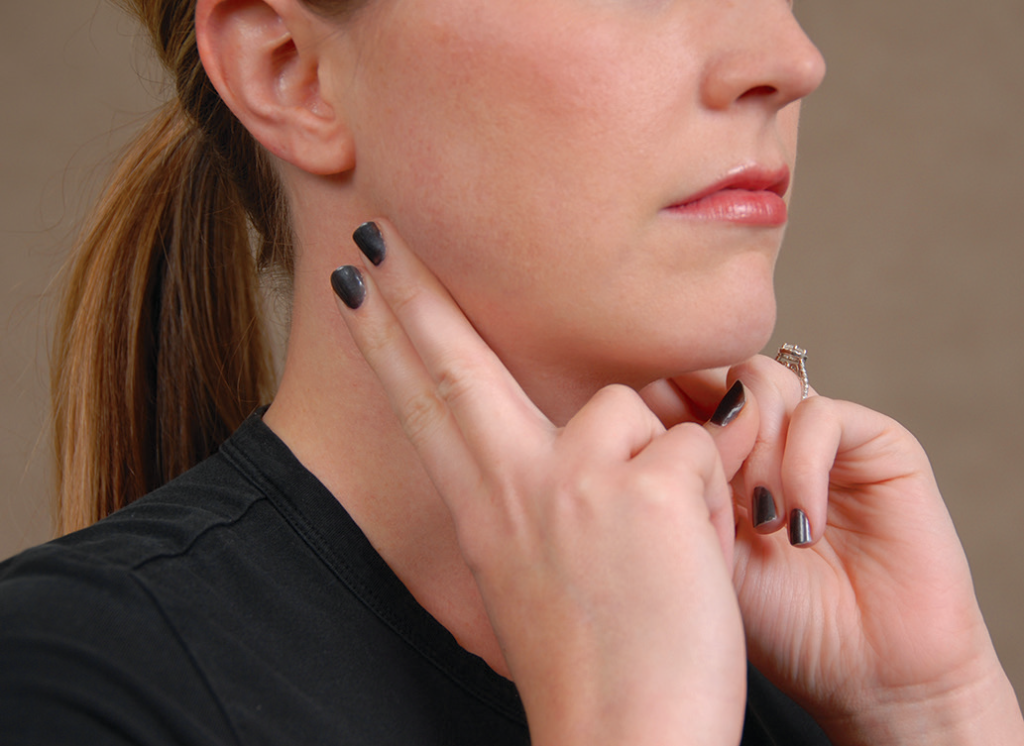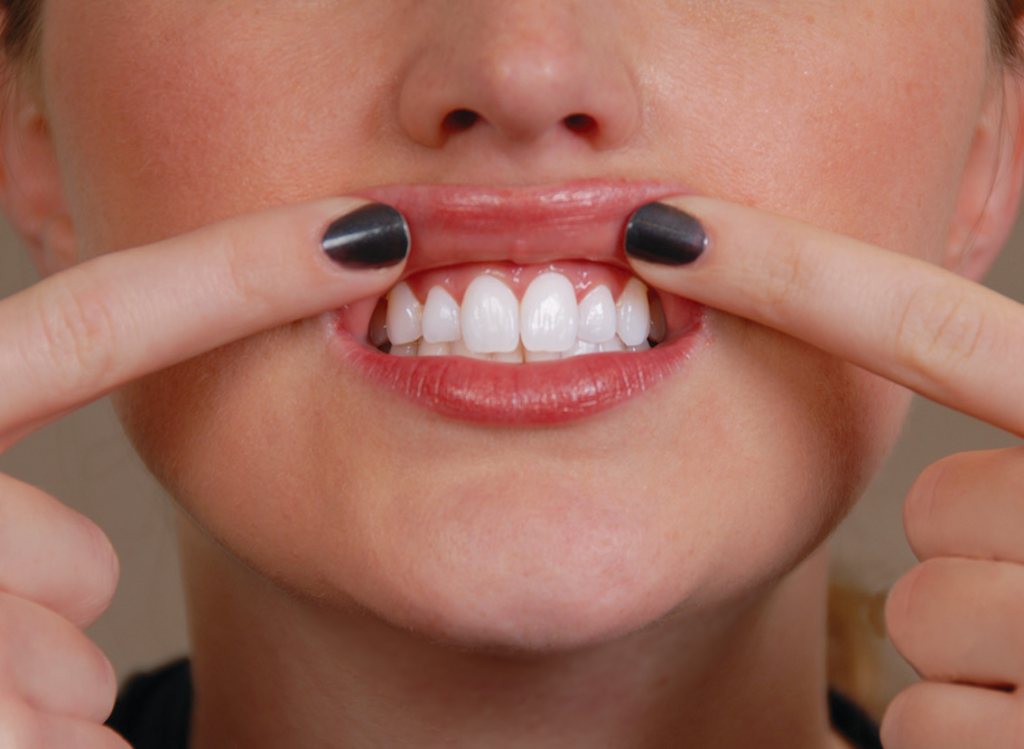Oral, Head & Neck Self-Exam Guide
Early detection and diagnosis is crucial to successful treatment of oral, head and neck cancers. When detected at stages I and II, the survival rate is over 80%; however, more than half of all cases are found later. At more advanced stages, survival rates are lower, treatments are more invasive, and the side effects of treatment are much more significant.
A head and neck self-exam is an opportunity for you to get to know your body and what’s normal for you. Repeating this exam monthly can help you identify any changes that should be examined by a doctor or dentist.
Follow the four steps below and look for abnormal, irregular, or discolored areas. Compare one side to the other for symmetry. If you discover abnormal, irregular, or discolored areas or lumps that are different on one side compared to the other, contact your health care provider or dentist.
1. Check the neck for lumps

2. Look at lips and cheeks


3. Bite gently; look at gums

4. Open mouth
Look at tongue (top, bottom, sides), back of the throat, the roof of the mouth, and under the tongue using a flashlight and mirror.

VIDEO: How to Do an Oral, Head and Neck Cancer Self-Exam
Symptoms of Oral, Head and Neck Cancer
- A red or white patch in your mouth (lips, cheeks, tongue, roof of your mouth)
- Any lump or bump in your mouth, throat or neck

